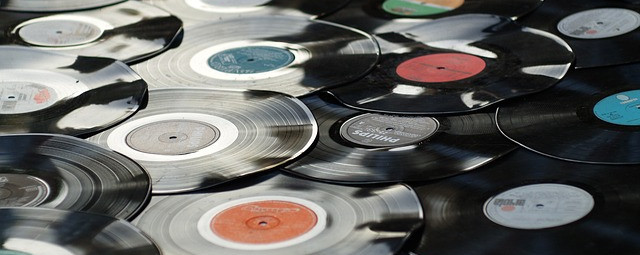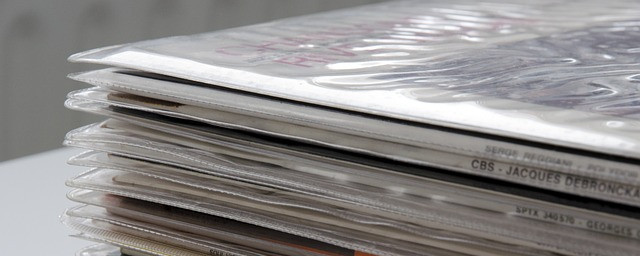Why you should store your vinyl properly

To facilitate them the longest possible life it is worth learning how to properly store your vinyl records. That said, vinyl is already acknowledged to be the more robust physical medium for music, better than CDs and certainly better than cassette tapes. Learning a few storage tips will significantly help your collection to last.
There are a number of factors that influence the playability and longevity of your vinyl records. Sources of heat and light especially will have an impact as will sources of moisture. Static electricity along with dust are additional contributors to their condition and by extension their playability and longevity.
This article may not be the be-all and end-all of how to properly store vinyl records, but it will undoubtedly give you a head start in terms of general hints and tips. Applying them to your own circumstances, and making your own adjustments is the way to go.
Where to keep your vinyl collection
Where you store your vinyl collection will obviously have a great bearing on how the factors mentioned will interact with it. Put them in a damp location and, guess what? Yep, they’ll get wet.
Store them in a conservatory and they will obviously be bleached by the sun or worse. Too close to a radiator? It’s not rocket science, is it?
Temperature
Ultimately, vinyl is a type of plastic, and we know what happens to plastic that has been exposed to heat (i.e., high temperatures). Of course, the higher the temperature that your vinyl is exposed to, the more it is likely to warp.
However, it’s not really high temperatures and sudden melting that you need to worry about. Vinyl melts at 200°F (not quite 95°C), so that’s not an issue. However, at temperatures of around 140°F (60°C), it will begin to warp, especially if other factors such as weight placed on your record, including self-weight, are involved.
You need, therefore, to keep your vinyl cool. Not cool like Fonzie, but anything in the in the range of 65° to 70°F (18° to 21°C). That’s quite a narrow range, but a good rule of thumb is to store your vinyl at a temperature that you feel comfortable.
Moisture
You don’t want your records getting wet… at all. The slightest hint of dampness will first cause problems for your record sleeves. Then, in terms of the vinyl itself, when moisture is absorbed, distortion happens. Yep, you guessed it, they will warp. Another result of moisture is mould or mildew forming on the surface of the vinyl.
Conversely, if moisture levels are too low, your records could dry out and become brittle and therefore, become prone to cracking and/or breaking. Their sound quality may also be compromised. Another issue with your records being stored in conditions which are too dry is the likelihood of static electricity which can attract dust and other debris, again affecting sound quality.
A relative humidity of between 40 and 50% is the recommended range in which to store your precious collection.
Light
Visible light is not the issue per se, it’s that pesky UV. It has enough energy to damage the chemical bonds in your vinyl. This will then lead to discolouration and brittleness. Your record won’t be much to look at and more importantly, it won’t be much to listen to either.
The energy that the UV element of sunlight represents also has a secondary impact in terms of heating up your vinyl. As discussed earlier, it’s unlikely to become hot enough to melt your vinyl, but it could easily reach a high enough temperature to begin to warp (140°F or 60°C). This is especially the case if your records are in a confined space.
Long-term storage
An LP record typically weighs 5 ounces or 142 grams. Multiply that by 50 records, that’s at least 15 lbs (7 kg). If you have this many lined up together, then the last one in line could have all of that weight pressing on it if they aren’t all stacked completely vertically.
This will almost inevitably lead to warping which in turn leads to distortion of the grooves. Since the grooves are the means of holding, and hence playing backing the music recorded, your record will not sound as it should.
I’m not going to suggest a weight at which a record would not become warped, but it stands to reason that too much weight for too long will end up with this result.
Therefore, any long-term storage solution will necessitate the spacing of your records so that they can either all stand individually or at least be grouped in numbers small enough that there is not too much weight on the last in line.
Dividers can be purchased for this task, and you should aim for enough dividers to separate your records into groups no more than six inches (15 cm) wide. Why not kill two birds with the same stone and use the dividers to group your records into alphabetical groups?
*On no account should you stack your records on top of each other 😉
Short-term storage
Of course, you are likely going to have a selection of records that are on heavy rotation. You’re not going to be so precious with these in terms of the weight of them, but you are going to need to take account of other issues such as static electricity and its partner in crime, dust.

So, as well as storing them close to your turntable, some manner of anti-static sleeve, whether paper or plastic will be required. You put the actual vinyl disc in them and then they go into the sleeve.
As an added layer of protection, you can also put the whole thing inside another plastic sleeve.
In this situation, it is always handy to have a means of cleaning your records handy too, so that each time you select a record you can clean it and also before you put it away again.
In conclusion
Keep your records cool and dry and away from direct sunlight and sources of heat.
Don’t stack them vertically and make sure that your horizontal placement of them doesn’t allow too much weight to rest upon the last in line.
You should always keep your records in a sleeve, whether they are used regularly or stored for any length of time.
If you have enjoyed this article or have anything you would like to add to the debate, please leave me a comment below.

Fantastic article, Simon! As a vinyl enthusiast, I can’t emphasize enough how crucial proper storage is for maintaining the longevity and quality of a vinyl record collection. You’ve done a great job of breaking down the different factors that can affect records, from temperature and humidity to light and weight.
Your point about the ideal temperature range is especially eye-opening. It’s easy to forget that vinyl is a type of plastic, susceptible to warping at higher temperatures. It makes sense to store vinyl at a comfortable room temperature, but the specifics you provided will definitely help me fine-tune my own storage conditions.
Thanks for sharing your insights!
Thanks for your comment and compliment, John. Yes, vinyl is a type of plastic and we know what happens to plastic when it gets too hot. Even just one record, stood on end is likely to warp given the ‘right’ conditions.
I’ve kept you long enough now 😉 I wish you every enjoyment as you listen to your vinyl collection. I wonder what your favourite record is? Mine is my Mum’s copy of the Beatles’ first album (in the UK) Please, Please Me.
Simon